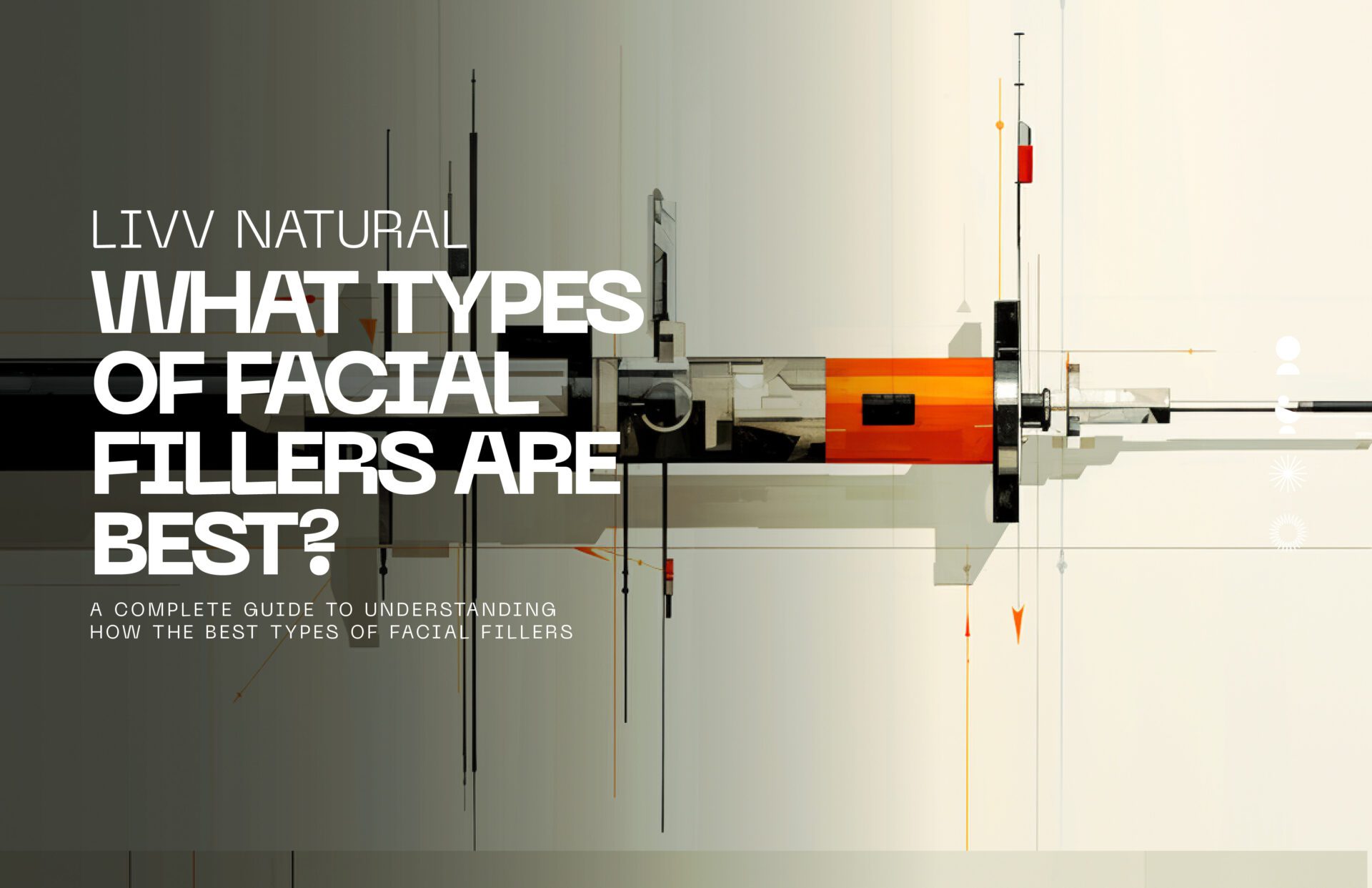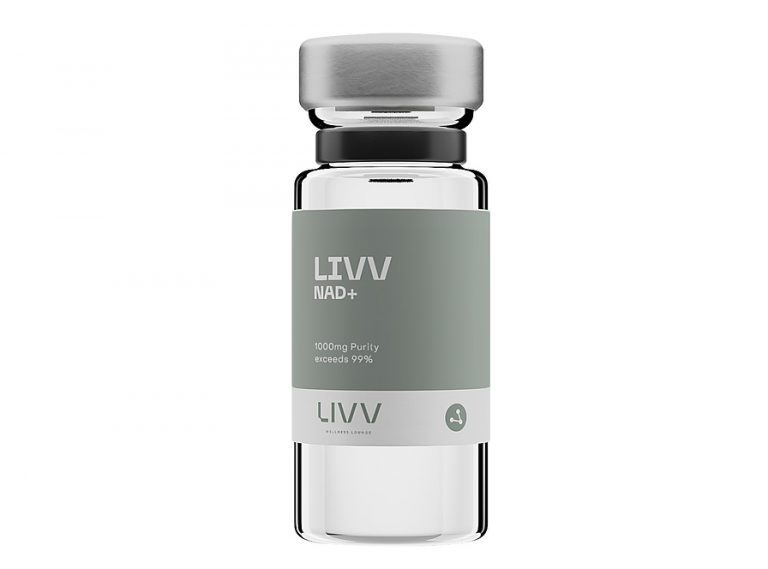Facial fillers – is it safe – I don’t want to look plastic

Contents
What are facial fillers?
Why use facial fillers?
What are the different types of facial fillers?
What types of facial fillers are best?
Are there risks to facial fillers?
What are the benefits of fillers?
How do I get facial fillers?
Safe and effective facial fillers at LIVV Natural
There are several types of facial fillers. Choices are diverse in chemical composition and how they work. Variables include duration of effects, safety, and interaction with soft tissue. Fillers are the lifeblood of most aesthetic clinics, making up the lion’s share of treatments.
Fillers promise a more youthful appearance by adding volume and firmness. The effects can last from months to years and combat dryness, sagging, and wrinkles.
Learn about facial fillers and why three million people get them in the USA. We outline the various options and explain the best and safest routes. Discover the benefits of this intriguing procedure and how it makes you look younger.
What are facial fillers?
Facial fillers are substances injected beneath the skin’s surface. Often called dermal fillers, different types of facial fillers add volume to the skin. They plump up your wrinkles and smooth lines for a more youthful appearance.
The most common facial fillers target the areas around the nose, eyes, and mouth. While it’s a cosmetic procedure, it isn’t surgical and is minimally invasive. People hope to enhance their facial features and counteract the aging process.
This elective treatment usually takes less than 30 minutes. Health professionals apply an anesthetic cream to reduce discomfort. The impact is generally immediate, and the results remain for 6–18 months. Variations depend on individual metabolism rate.
The recovery time is minimal, but some patients need to wait a fortnight for the swelling to subside. Avoid heavy exercise and intense sweating for 24–48 hours to minimize swelling or bruising. You can resume your daily routine immediately.
Aim to book your procedure around a fortnight before an event. You may encounter redness and tenderness at the injection areas. Most patients report these reactions disappear after a couple of days.
The best facial fillers provide volume and lift. The most important physical characteristics are viscosity, elasticity, and cohesivity.
Viscosity allows the filler to stay in place. Elasticity measures the filler’s resistance to deformation. Cohesivity evaluates the internal adhesive forces of these gels. Elasticity and cohesivity together determine the lift capacity.
Why use facial fillers?
Most people use facial fillers to make up for falling collagen levels. As you age, collagen stocks fall, causing loose skin, loss of volume, and sagging. Sun damage, gravity, and repetitive muscle action create lines, creases, and folds.
Most patients use facial fillers to:
- Smooth wrinkles and lines on the face.
- Make features more symmetrical.
- Increase volume in facial skin, cheeks, or lips.
- Add volume to counteract sagging.
Cosmetic surgeons use facial fillers to minimize the effects of aging. They also counteract fine lines and deep creases. Fillers disguise blemishes, depressions, or even scars from severe acne.
Many people utilize them to fill hollow areas that form below the eyes. Some patients address issues with skin folds and deep wrinkles. Others get facial fillers to increase the fullness of the cheeks, lips, jawline, or chin.
Some medications for diseases like HIV/AIDS can cause noticeable facial fat loss. Fillers can counter the effects and boost self confidence.
What are the different types of facial fillers?
There are many types of facial fillers. Some choose synthetic fillers, while others prefer naturally occurring compounds.
You could also try autologous fat grafting for facial rejuvenation. It involves extracting your own fat and re-injecting it into your face. It improves tone and texture to revitalize your skin.
What are fillers made of? We describe the most popular fillers and their make-up below.
Hyaluronic acid (HA)
Hyaluronic acid (HA) occurs naturally in the body, with 50% found in the skin. A healthy person weighing around 150 pounds naturally has around half an ounce.
It has a short half life, and about a third gets replaced in 24 hours. Your body reduces production with age, but fillers can flip the script.
Hyaluronic acid boosts volume and hydration, with effects lasting 6–18 months. You can tailor these treatments to individual requirements and desired outcomes.
There are several FDA-approved options. The most popular choices include Juvéderm, Restylane products, and the RHA collection.
Polymethyl methacrylate (PMMA)
Polymethyl methacrylate (PMMA) filler consists of collagen and tiny balls that remain under the skin. The microspheres comprise a fifth of the volume. Bovine collagen gel makes up the remaining 80%. The little balls give your skin volume, keeping it firm and younger looking.
PMMA is also called “bone cement,” and it’s highly biocompatible. Examples are Bellafill, the only FDA-approved injectable filler for acne scars. A 2020 review of four years of data revealed high patient satisfaction and safety.
Poly-L-lactic acid (PLLA)
Poly-L-lactic acid (PLLA) improves structure and volume in the face. Approved by the FDA in 2004, it treats thinning of the fat pads in the cheeks, a condition often related to HIV treatments. It can leave patients with a gaunt, sagging, or sunken appearance.
PLLA is biostimulatory, boosting your skin’s capacity to create collagen. In time, the body naturally breaks it down into carbon dioxide and water.
The effects may take a few months to appear and can last years. Sculptra is a commercial example of a PLLA treatment. A review of collagen stimulators states PLLA is effective and safe.
Calcium hydroxylapatite (CaHA)
Calcium hydroxylapatite (CaHA) is one of the most documented fillers. Medical professionals use it to treat moderate to severe facial lines and folds. It also replenishes lost volume, counteracting the effects of aging.
Unique properties make it an effective method of supplementing facial soft tissue. It has an impressive safety profile and boosts natural long-term collagen production. It’s biodegradable and reabsorbed by your metabolic processes.
A popular example is Radiesse. It contains 30% synthetic CaHA microspheres suspended in an aqueous gel. It provides immediate volume and continuing collagen biostimulation. New collagen growth occurs within four weeks and continues for at least 12 months.
What types of facial fillers are best?
There are several types of facial fillers. At LIVV Natural, we use hyaluronic acid. Your body produces it naturally in the plasma or cell membrane. Scientists first isolated HA in 1934.
Hyaluronic acid plays an essential role in regulating skin development and water retention. It can hold up to 1,000 times its own weight in H2O. It also lubricates joints and maintains connective tissue. HA regulates embryo cell behavior and repairs and regenerates wounds.
Early filler options caused some worrying side effects and serious complications. In the early 2000s, most facial fillers used collagen. This reduced the potential for allergies and serious adverse events. Some sources remained problematic.
By 2013, hyaluronic acid was the number one choice, with 85% of injectables using it.
Are there risks to facial fillers?
The original facial fillers caused frequent adverse reactions. There were issues with migration, inflammation, hypersensitivity, or necrosis.
Research and development has helped, but are fillers safe? Collagen fillers were an improvement, but hyaluronic acid is the industry gold standard.
There are risks with all cosmetic procedures. With HA fillers, minor issues include bleeding, swelling, or infections.
Hyaluronic acid fillers are safe and effective for patients with darker skin pigmentation. HA doesn’t increase the potential for hyperpigmentation, keloids, or hypertrophic scarring.
What are the benefits of fillers?
The FDA classifies fillers as medical devices with mechanical effects (filling). Some people call them wrinkle fillers, but they do much more.
Facial fillers can smooth out lines around the nose, mouth, and eyes. Often called marionette or smile lines, they’re the most obvious signs of aging. They get deep or more pronounced with age, but fillers can pause their progress.
Dermal fillers lift and shape your facial contours, restoring volume to the cheeks. Fillers also add depth around the eyes and temples for a fuller countenance.
Hyaluronic acid fillers can fill out scar pits and improve your skin texture. They plump up lips and eliminate vertical lines. Dermal injectables smooth out chin creases and can make your face more symmetrical.
Different types of facial fillers promote healthy, youthful skin. They can enhance your features and hide or disguise blemishes. This treatment is also simple, convenient, and takes almost no time to recover.
Fillers are more affordable than elective surgical options. The effects last several months to years, depending on the product.
How do I get facial fillers?
First, you need to book a consultation with a specialist to assess your skin. Together, you decide on your preferred filler options and consider all the specifics. They also explain the recovery and potential side effects.
For safety, it’s vital to check out your medical history. Some medications can cause recovery issues and increase the potential for complications. Tell your doctor about any allergies, skin conditions, or neurological problems.
If you’ve had any previous sessions, let your specialist know. They can use your previous experience and reactions to plan a strategy.
During the procedure, your practitioner cleans the skin and applies a numbing cream. They then use a thin needle to inject filler just beneath the skin surface. You’ll feel the prick or a mild sting, but for most patients, it’s tolerable.
It can take a few minutes to half an hour, depending on your individual plan. Your therapist may provide an ice pack to cool the skin, reducing swelling and pain.
Some patients get bruises, while others report minor bleeding, swelling, or discomfort. Side effects are temporary and usually disappear after a few days.
You may note immediate improvements, but sometimes it takes a few weeks to settle in. The results and their duration depend on genetics and the type of procedure.
Safe and effective facial fillers at LIVV Natural
Injectable fillers are a popular, safe, and effective treatment method for aging skin. There are several types of facial fillers for a younger appearance. Discuss your concerns with an experienced professional to attain the best results.
Book an appointment with LIVV Natural to explore your filler options. It could make you look and feel younger at a fraction of the cost of elective surgeries. Boost your confidence and roll back the years with the best facial fillers you can get.
Author: Dr. Jason Phan NMD – Founder of LIVV Natural – Anti-aging – regenerative medicine – peptide therapy



